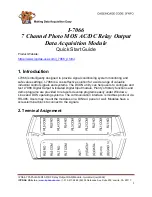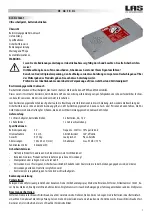
RC Commands
R&S
®
OSP
264
User Manual 1178.7100.02 ─ 05
Example:
READ:IO:IN? (@F01M02,F02M05)
Return value:
3,9
The 16-bit binary equivalents are
0000 0000 0000 0011
and
0000 0000 0000 1001
. Hence, input channels 1 and 2 of
module M02 in switch unit F01 and input channels 1 and 4 of
module M05 in switch unit F02 are in high state. All other chan-
nels are in low state.
Usage:
Query only
READ:MODule:INTerlock?
<module names>
Queries the interlock state of one or more selected modules.
The query applies only to modules that have an interlock, as in these modules:
●
●
Query parameters:
<module names>
(@FxxMyy,FxxMyy,FxxMyy,...)
Selects the modules that you want to query for their interlock
states.
Identify the modules by their frame IDs Fxx and module num-
bers Myy. For a description of these parameters, refer to
Write the combined frame/module names FxxMyy, separated by
commas, inside an expression of two brackets and the "@" sign.
Do not use blank spaces or quotation marks in this expression.
Example:
(@F01M01,F01M06,F02M03)
Only for querying
one single
module, you can use syntax without
"
(@...)
", for example:
F01M01
If a module that you specify does not exist or does not support
READ:MOD:INT?
(having no interlock functionality), the query
returns no result and a SCPI error is generated. You can query
the error with
For example, with a query
READ:MOD:INT? (@F01M06)
, the
result can be:
-222,"Data out of range;Invalid index. frame F01:
no module connected to M06,READ:MOD:INT?
F01M06"
Or with a query
READ:MOD:INT? (@F01M03)
, the result can
be:
-170,"Expression error;module on connector M03
does not support interlock,READ:MOD:INT?
F01M03"
Return values:
<interlock states>
0 | 1
Comma-separated list of "0 | 1" values that represent the inter-
lock states.
READ Commands
















































